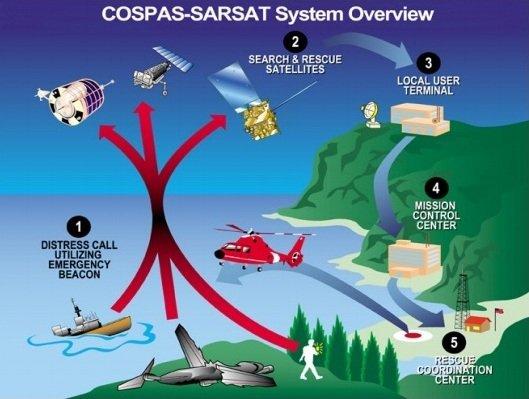The international Cospas–Sarsat programme is a satellite-based SAR distress-alert detection system.
The Cospas–Sarsat system is made up of satellites in space and infrastructure to receive signals on the ground.
The space segment
The space segment consists of satellites that detect and locate distress beacons.
The ground segment
The ground segment is made up of local user terminals (LUTs) and mission control centres (MCCs).
LUTs are ground receiving stations for the satellite transmissions.
In Australia, there are LUTs located in Bundaberg, Queensland and Albany, Western Australia which work in cooperation with the New Zealand LUT. The new medium-altitude Earth orbit search and rescue (MEOSAR) system has a LUT near Mingenew, Western Australia and a LUT in New Zealand at Goudies Road on the North Island.
MCCs analyse and distribute distress alerts to the rescue coordination centres (RCC) in the country’s SAR region where the beacon is both activated and registered.
How does the Cospas–Sarsat system work in Australia?
- A distress beacon is activated.
- Its signal, with its unique identification number (HEX ID), is transmitted and detected by the nearest satellite overhead.
- An alert is sent to the nearest local user terminal (LUT).
- The alert is processed by the nearest mission control centre (MCC).
If the beacon is registered, registration details are provided to the joint rescue coordination centre (JRCC) in the country in which the beacon is both activated and registered.
If the beacon is activated in the Australian SAR region, then the details are forwarded to our JRCC in Canberra. - The JRCC is notified and begins to arrange the SAR operation.
- If your beacon is registered, we will ring your emergency contacts immediately for information regarding your whereabouts.
- SAR authorities commence search operations as soon as possible.

Read more about MEOSAR PDF184.76 KB.